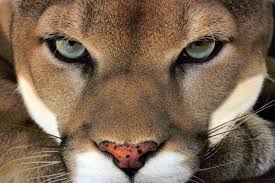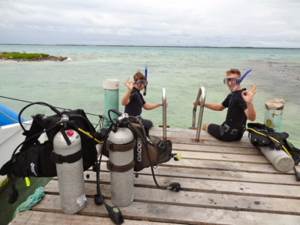In the depths of Belize’s untamed wilderness, a stealthy predator roams, its golden coat blending seamlessly with the dappled sunlight filtering through the dense canopy. The puma, also known as the mountain lion or cougar, commands respect as one of the largest and most elusive cats in the region. With its solitary habits and mastery of stealth, the puma embodies the enigmatic allure of Belize’s remote and rugged landscapes. Join us as we unravel the mysteries surrounding this majestic feline and delve into its fascinating world in the heart of Central America.
Mysteries of the Jungle: Tracking the Puma’s Footprints in Belize
In the verdant depths of Belize’s lush jungles, the puma leaves behind a trail of intrigue and wonder. Tracking the footprints of this elusive feline is akin to unraveling a captivating mystery, where each paw print tells a story of stealth, survival, and adaptation.
The puma’s tracks, etched into the soft earth, speak volumes about its secretive nature. Its wide, rounded paw pads leave distinct imprints, revealing the cat’s considerable size and agility. As a solitary hunter, the puma relies on its keen senses and silent movements to stalk its prey, making it a master of stealth in the dense foliage of Belize’s wilderness.
Following the puma’s trail requires patience, skill, and a deep understanding of its behavior. Experienced trackers can discern the direction of its travel, the pace of its movements, and even the moments of rest or observation marked by subtle changes in the track pattern. Each track tells a story, offering glimpses into the puma’s daily life and survival strategies.
One of the most fascinating aspects of tracking pumas in Belize is uncovering their diverse hunting techniques. From stealthy ambushes to strategic pursuits over rugged terrain, these cats display remarkable adaptability in capturing their prey. They target a variety of species, including deer, peccaries, and smaller mammals, showcasing their role as top predators in Belize’s ecosystem.
Moreover, studying the puma’s footprints provides insights into its territorial behaviors and interactions with other wildlife. Scattered tracks and markings reveal territorial boundaries, mating rituals, and occasional encounters with rival predators like jaguars, highlighting the complex dynamics of Belize’s carnivorous inhabitants.
As we delve deeper into the mysteries of the jungle, each footprint becomes a thread in the rich tapestry of Belize’s natural heritage, reminding us of the intricate web of life that sustains the puma and its wild counterparts in this captivating landscape.
Adaptations of a Silent Hunter: How the Puma Thrives in Belize’s Wilderness
The puma, revered for its prowess as a silent hunter, embodies a remarkable array of adaptations that enable it to thrive in Belize’s diverse and challenging wilderness. From its physical attributes to its behavioral strategies, every aspect of the puma’s existence reflects a finely tuned survival machine finely attuned to its environment.
At the forefront of the puma’s arsenal are its powerful physique and agility. With muscular limbs and a sleek, streamlined body, it navigates through Belize’s rugged terrain with grace and precision. Its keen senses, including sharp vision and acute hearing, allow it to detect prey from great distances, while its retractable claws and strong jaws deliver swift and lethal strikes when hunting.
The puma’s adaptability is further showcased in its dietary preferences and hunting techniques. Unlike specialized hunters, pumas are opportunistic carnivores, capable of preying on a wide range of animals, from small rodents to large ungulates. This versatility ensures their survival in dynamic ecosystems where food availability fluctuates seasonally.
In Belize’s wilderness, where resources can be scarce and competition is fierce, the puma’s solitary lifestyle is a strategic advantage. By minimizing interactions with other predators and conserving energy during periods of rest, it optimizes its chances of successful hunts and territorial defense.
Another critical adaptation of the puma is its ability to camouflage and blend seamlessly into its surroundings. Its tawny coat, adorned with subtle markings, provides excellent camouflage among the dappled shadows of the forest, making it a ghostly presence that can appear and disappear with astonishing stealth.
As we unravel the intricacies of the puma’s adaptations, we gain a deeper appreciation for its role as a keystone species in Belize’s ecosystem. Its presence not only regulates prey populations but also shapes the dynamics of the entire food web, underscoring the importance of conserving these magnificent predators for the health and balance of Belize’s wilderness.
Conservation Challenges: Protecting the Puma’s Habitat in Belize
While the puma’s adaptability has ensured its survival in Belize’s wilderness for centuries, modern conservation challenges threaten its continued existence. Protecting the puma’s habitat is paramount to preserving this iconic species and maintaining the delicate balance of Belize’s ecosystems.
One of the primary threats to puma habitat in Belize is habitat loss and fragmentation due to human activities. Deforestation, agricultural expansion, and infrastructure development encroach upon the wild spaces that pumas rely on for hunting, shelter, and raising their young. As these habitats shrink and become fragmented, pumas face increased competition for resources and encounters with humans, leading to conflicts and population declines.
Human-wildlife conflicts are a significant concern for puma conservation in Belize. As human populations expand and urban areas expand into natural landscapes, interactions between humans and pumas become more frequent. Livestock depredation, perceived threats to human safety, and retaliatory killings are common issues that exacerbate tensions and pose threats to puma populations.
Furthermore, the illegal wildlife trade and poaching pose serious risks to pumas in Belize. Demand for puma parts, such as pelts and bones, fuels illegal hunting and trade networks, putting additional pressure on already vulnerable populations. Without robust enforcement of wildlife protection laws and international collaboration to combat illegal wildlife trade, pumas remain at risk of exploitation and population decline.
Climate change adds another layer of complexity to puma conservation efforts in Belize. Rising temperatures, changing precipitation patterns, and habitat alterations disrupt the delicate balance of ecosystems, affecting prey availability, water sources, and habitat suitability for pumas. Adapting to these rapid environmental changes requires proactive conservation strategies and landscape management approaches that prioritize habitat connectivity and resilience.
Addressing these conservation challenges requires a multi-faceted approach that integrates habitat protection, community engagement, law enforcement, and scientific research. By safeguarding the puma’s habitat and mitigating human-wildlife conflicts, Belize can ensure a sustainable future for this majestic predator and the diverse ecosystems it inhabits.
Final Thoughts
The puma, a symbol of strength and adaptability, stands as a sentinel of Belize’s wild places. As we conclude our exploration of this magnificent feline, it’s crucial to reflect on the intertwined challenges and opportunities facing puma conservation in Belize.
While the puma’s natural resilience has enabled it to persist in diverse landscapes, human-induced threats loom large. Habitat loss, human-wildlife conflicts, illegal wildlife trade, and climate change collectively endanger the puma’s future. However, these challenges also underscore the urgent need for concerted conservation efforts and collaborative approaches.
Conservation initiatives must prioritize the protection and restoration of puma habitat, ensuring connectivity across landscapes to support healthy populations. Engaging local communities in conservation practices, fostering coexistence between humans and wildlife, and implementing sustainable land-use practices are essential steps towards harmonizing human activities with nature.
Enforcement of wildlife protection laws, combating illegal wildlife trade, and strengthening international cooperation are critical in curbing threats to puma populations. Climate resilience strategies, including habitat restoration and adaptation measures, are also vital for safeguarding the puma’s long-term survival in a changing world.
Ultimately, the conservation of the puma in Belize is not just about protecting a single species but safeguarding the intricate web of life that sustains biodiversity and ecosystem health. By valuing and conserving the puma, we invest in the future resilience of Belize’s natural heritage and ensure a legacy of wilderness for generations to come.




